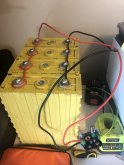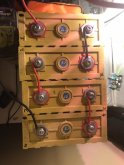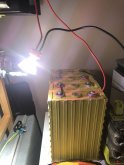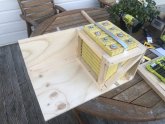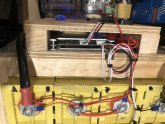Hello all, I thought I would share my project with you. I have a 2004 caravan with 150W solar and a sealed lead acid battery 12V system.
I’m going to upgrade the battery to a 160Ah LIFEPO4 battery I made out of prismatic cells. I’m also going to replace some other components, including a new Victron 100/30 MPPT controller, a Victron 10A AC battery charger, and a new fuse distribution block as well as some other bits and pieces.
I’m not planning on upgrading the solar panel, but I will if I need to. I won’t have an inverter because I have no need for one. I have a 90L 12V compressor fridge and I’m going to convert the filament lighting to LED. Apart from charging phones and a fan (no AC) I don’t have high draw devices.
I welcome any constructive feedback or questions!
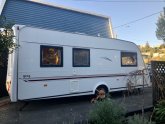
Elddis Odyssey 505
Battery
After watching lots of videos, mainly by Will Prowse, I decided to make my own LIFEPO4 battery. The main reason for this decision was cost. I also enjoy working with electronics so I thought it would be fun. I managed to find four used 160Ah prismatic cells on TradeMe, which is the New Zealand equivalent of eBay. I know it’s a risk buying second hand, but they were very cheap (US$200) and had come from a piece of medical equipment, which hopefully means they were replaced as part of a scheduled replacement program and not because they had failed. My caravan power needs are modest and if I have to run them at reduced capacity, that’s ok. I can go down to 100Ah without much trouble.
I bought a 4S 100A BMS recommend by Will. I’ll need to balance the batteries before I connect them to the BMS.
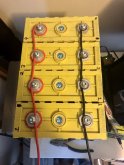
Batteries connected in parallel before I top balance them
Next steps are:
Stay tuned for updates!
I’m going to upgrade the battery to a 160Ah LIFEPO4 battery I made out of prismatic cells. I’m also going to replace some other components, including a new Victron 100/30 MPPT controller, a Victron 10A AC battery charger, and a new fuse distribution block as well as some other bits and pieces.
I’m not planning on upgrading the solar panel, but I will if I need to. I won’t have an inverter because I have no need for one. I have a 90L 12V compressor fridge and I’m going to convert the filament lighting to LED. Apart from charging phones and a fan (no AC) I don’t have high draw devices.
I welcome any constructive feedback or questions!

Elddis Odyssey 505
Battery
After watching lots of videos, mainly by Will Prowse, I decided to make my own LIFEPO4 battery. The main reason for this decision was cost. I also enjoy working with electronics so I thought it would be fun. I managed to find four used 160Ah prismatic cells on TradeMe, which is the New Zealand equivalent of eBay. I know it’s a risk buying second hand, but they were very cheap (US$200) and had come from a piece of medical equipment, which hopefully means they were replaced as part of a scheduled replacement program and not because they had failed. My caravan power needs are modest and if I have to run them at reduced capacity, that’s ok. I can go down to 100Ah without much trouble.
I bought a 4S 100A BMS recommend by Will. I’ll need to balance the batteries before I connect them to the BMS.

Batteries connected in parallel before I top balance them
Next steps are:
- Finish balancing the cells
- Connect BMS
- Construct battery case for cells and plywood backing for power system components
- Install new solar controller, battery charger, fuse block and other controllers
- Upgrade lighting to LED
- Test it out
Stay tuned for updates!





